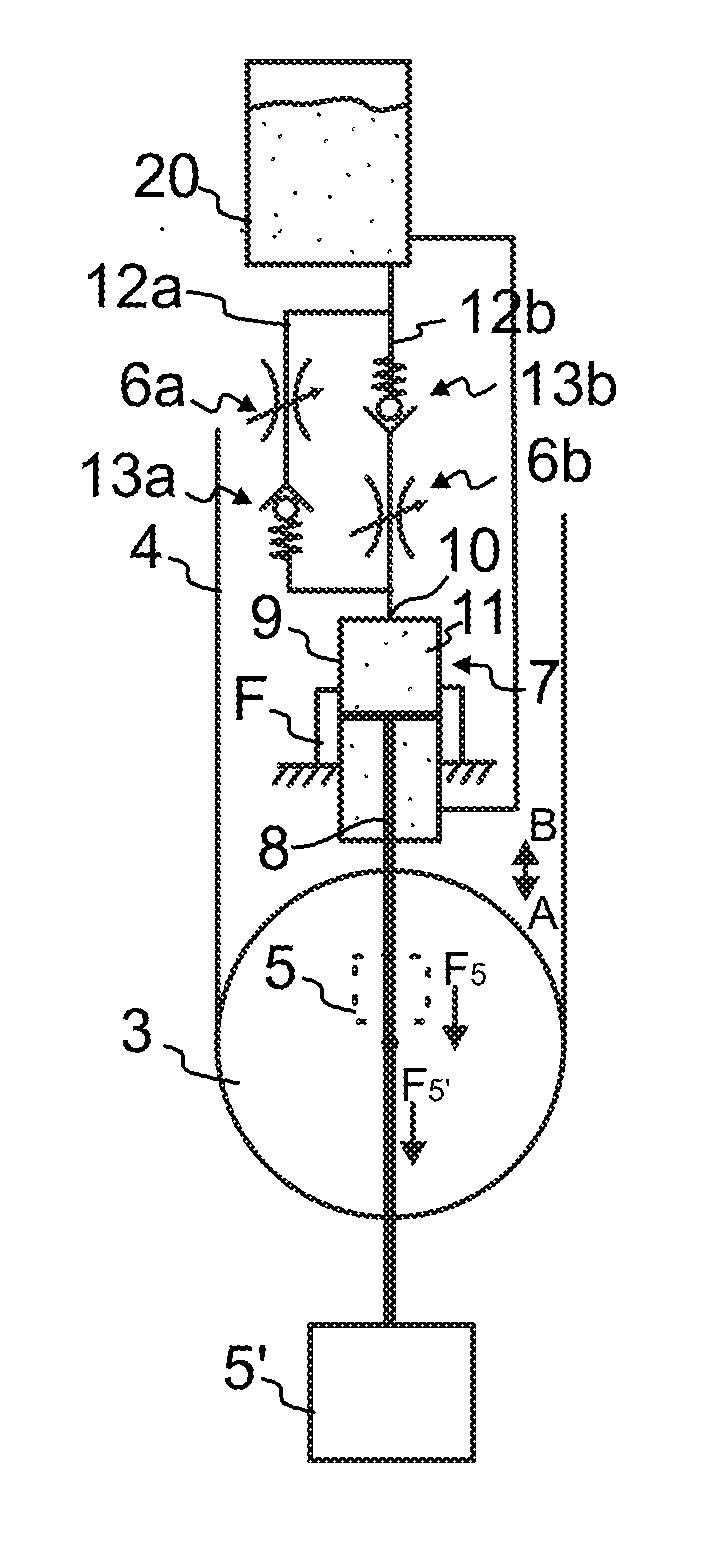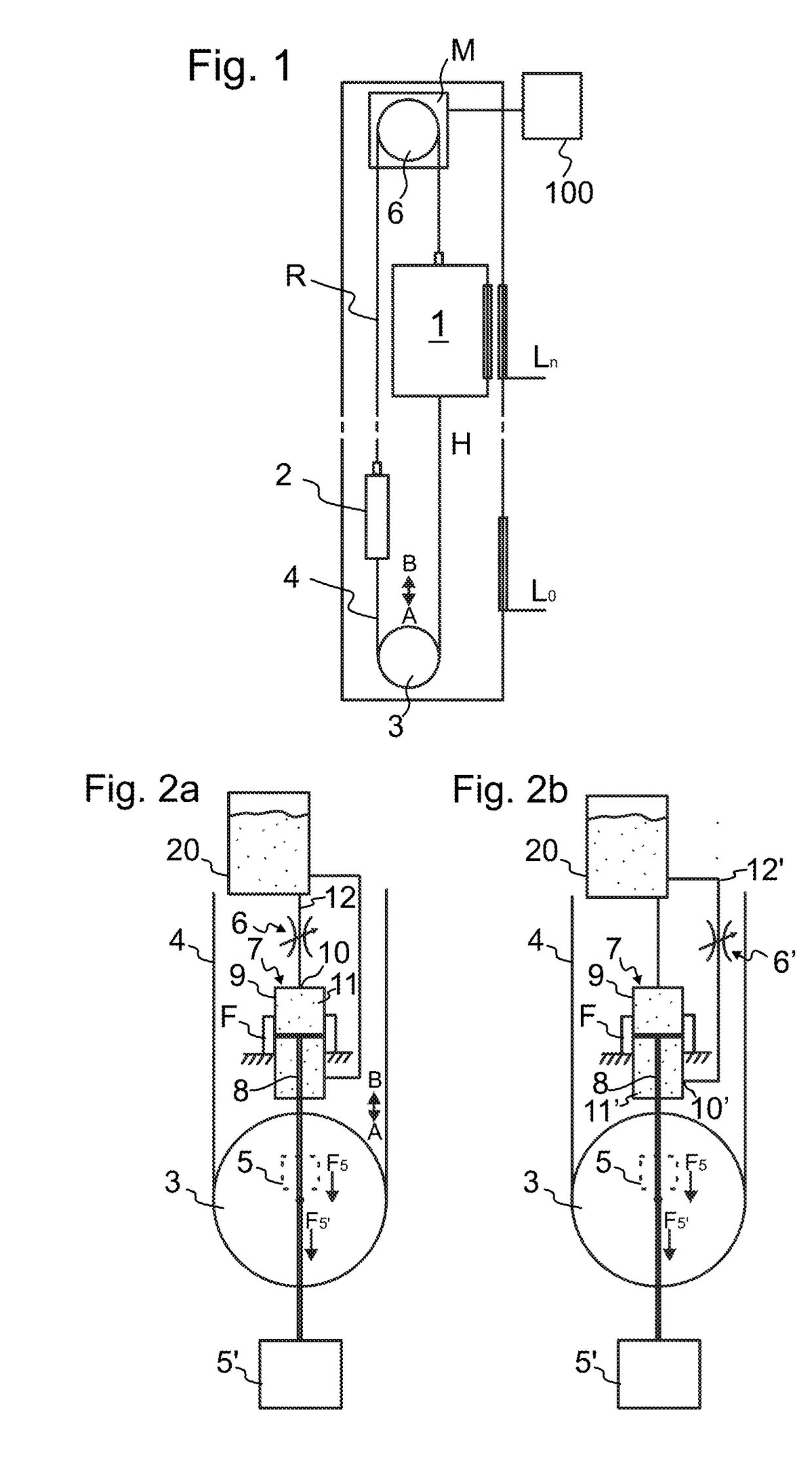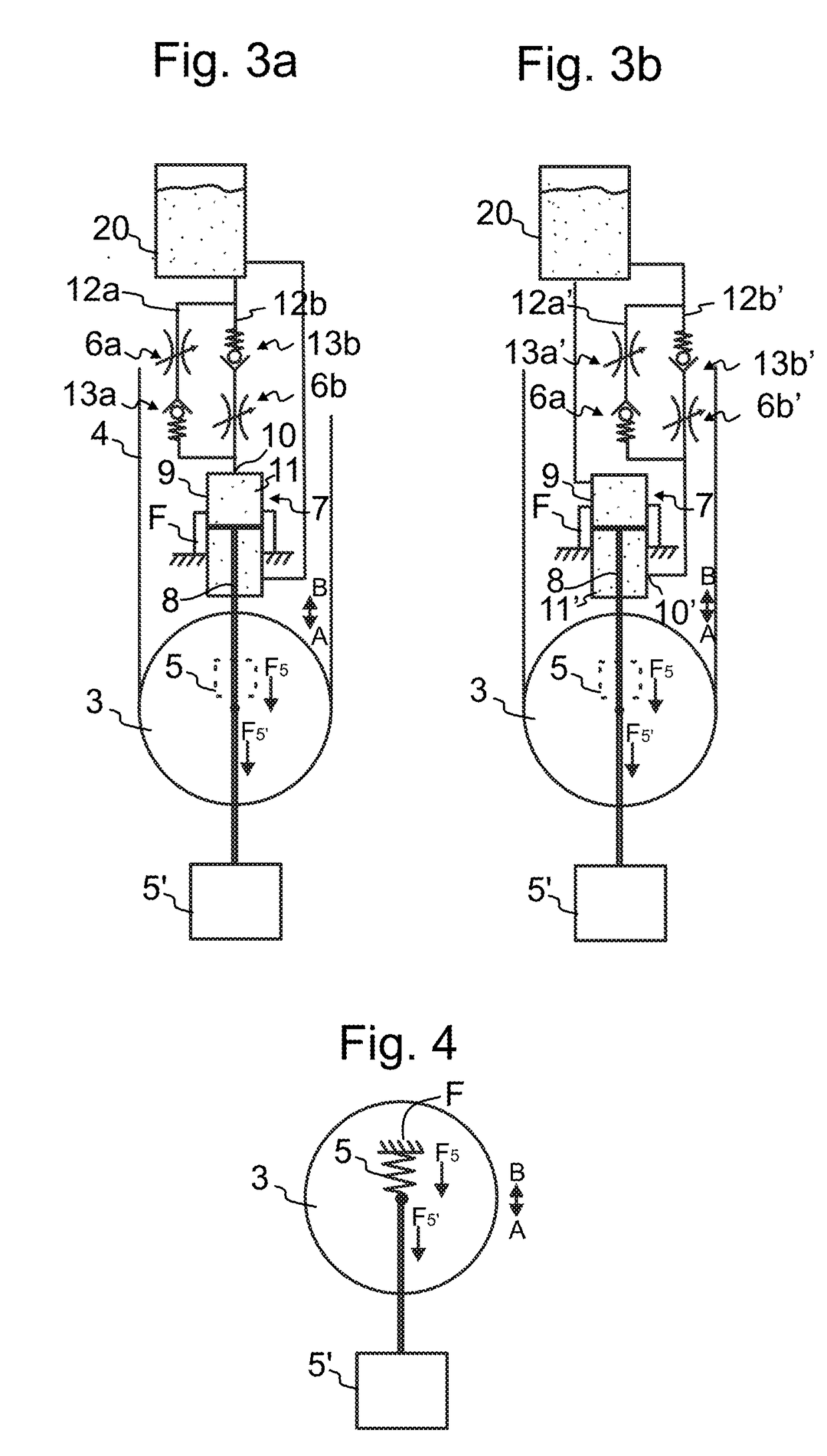Elevator
a technology of elevators and lowering wheels, applied in the field of elevators, can solve the problems of sudden changes in vertical forces exerted on the car, uncontrollable change of the load of the car, rapid stepwise movement of the car upwards or downwards, etc., and achieve the effect of limiting the movement speed of the tightening wheel, and substantially eliminating the risk of the car during the unloading situation
- Summary
- Abstract
- Description
- Claims
- Application Information
AI Technical Summary
Benefits of technology
Problems solved by technology
Method used
Image
Examples
Embodiment Construction
[0028]FIG. 1 illustrates an elevator according to a preferred embodiment. The elevator comprises a hoistway H, an elevator car 1 and a counterweight 2 vertically movable in the hoistway H, and a drive machine M, which provides moving force for the elevator car 1 under control of an elevator control system 100. The elevator furthermore comprises landings L0-Ln, where the elevator car is arranged to visit for unloading passengers and / or loading passengers.
[0029]The car 1 and counterweight 2 are interconnected by a first roping R, i.e. a suspension roping R, which passes around at least one rope wheel 6 located in or at least in proximity of the upper end of the hoistway H suspending the car 1 and counterweight 2 on opposite sides of the rope wheel 6.
[0030]The elevator further comprises at least one tightening wheel 3 located in the lower end of the hoistway H, and a second roping 4 interconnecting the car 1 and counterweight 2 and passing around the at least one tightening wheel 3. Th...
PUM
 Login to View More
Login to View More Abstract
Description
Claims
Application Information
 Login to View More
Login to View More - R&D
- Intellectual Property
- Life Sciences
- Materials
- Tech Scout
- Unparalleled Data Quality
- Higher Quality Content
- 60% Fewer Hallucinations
Browse by: Latest US Patents, China's latest patents, Technical Efficacy Thesaurus, Application Domain, Technology Topic, Popular Technical Reports.
© 2025 PatSnap. All rights reserved.Legal|Privacy policy|Modern Slavery Act Transparency Statement|Sitemap|About US| Contact US: help@patsnap.com



